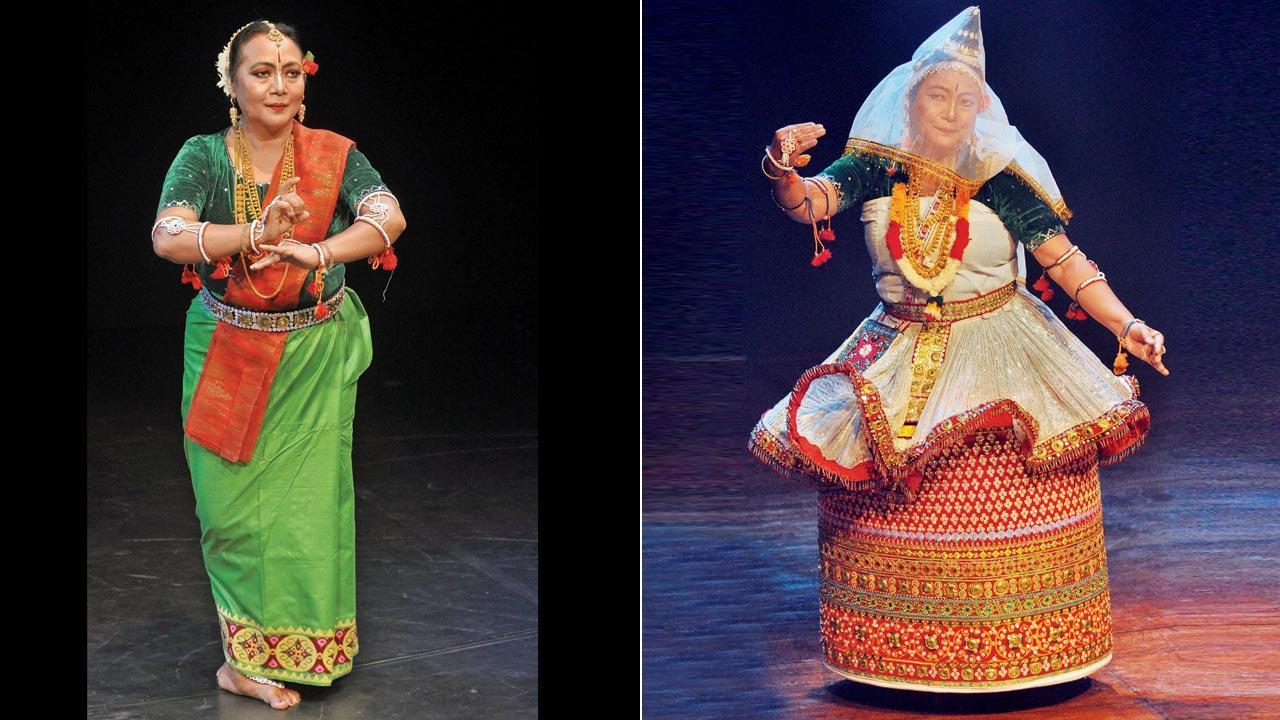In a new performance that brings together Manipuri classical and folk dance, Latasana Devi confronts the war in her home state, and the lives and culture lost in the bargain

Sangeet Natak Akademi Award-winning dancer Latasana Devi has enjoyed a 35-year-long relationship with Mumbai, where she found support from fellow artistes and nurtured many students. Pics Courtesy/NCPA
Mother, maternal, motherland—the root word ‘palem’ in the Manipuri tongue is imbued with rich, evocative meaning. It is also at the heart of classical dancer Latasana Devi’s upcoming performance at Nariman Point’s National Centre for Performing Arts (NCPA), as part of the institution’s Mudra Dance Festival 2024.
ADVERTISEMENT
“Manipur continues to burn. The situation saddens me because there are fatalities every single day. The personified motherland in our performance mourns—in a rudaali-like singing style—the deaths of her children, and the loss of her culture in the process,” says a sombre Devi. The end of PALEM – Mother, however, is shaped by the dancer’s own optimism for her home state, and a belief that those who truly love their motherland will save it from infighting.
Mid-day catches up with Devi between rehearsals and performances, two weeks after she was conferred with the Sangeet Natak Akademi Award for her contributions to Manipuri dance. The honour has renewed the sense of responsibility she feels as a veteran proponent of the form. “Every award I have received so far has encouraged me to pursue my craft further, and to ensure that it reaches newer places. For many years, I felt as though the hard work I’d put into my craft had not been recognised; I wondered if anyone had taken notice. I’m glad that the Sangeet Natak Akademi laurel has proven me wrong,” she says with pride.
Devi is a disciple of Padma Shri-winner Darshana Jhaveri and Bipin Singh, who is considered a father of the form. Her relationship with Mumbai goes back 35 years—here, she worked with Jhaveri at the Mumbai outpost of the Manipuri Nartanalaya, and at the NCPA under its CSR initiative Nritya Parichay, imparting dance skills to underprivileged children. Two of her students at Nritya Parichay have gone on to become her assistants, and teachers in their own right.
“The culture scene in the city is very fast paced, it’s akin to Mumbai’s sea. To be honest, I prefer the stillness and stability of mountains… To me, the city’s beauty lay in the support and solidarity artistes offered to each other, across mediums. I was struck by the unsaid unity I saw on display, as the artistes here would regularly show up to watch each other perform,” she shares. Three decades in the city have also bestowed Devi with an amateur’s vocabulary in Marathi.
In the initial years, Devi wondered about how the languid, graceful dance form would be received in Mumbai. “The focus is on ‘angika’; the depiction of phenomena like flowing water or beauty must be done solely through body movements and gestures. There are restrictions on the abhinay, expressions and eye movements, if a performance is staged at a religious space; on stage, performers can embrace these aspects more wholeheartedly,” she explains.
Devi, who began her training at age eight, offers insight into what makes Manipuri classical dance stand out, in particular its Tandava (masculine) and Lasya (feminine) aspects. “The practitioner is both, Radha and Krishna; both Krishna and Gopi... Further, the form didn’t evolve from a Devadasi-like social system,” says the artiste, who is also well-versed in cymbal dance, drums indigenous to her state, and martial arts.
Through PALEM – Mother at the Mudra Dance Festival, attendees who have never visited Manipur or been exposed to its culture will have the chance to see the various costume and clothing styles that the state has nurtured, across classical and folk traditions and festive occasions. The first half weaves together traditional dance as well as pung and dhol cholom, drum-based dances—a result of Devi’s strong belief that both the traditional and folk enrich each other. In the second, attendees will get a taste of martial arts as well as how Holi is celebrated in the state.
“The outfit worn by brides on their wedding days is similar to the ‘polloi’ raas leela costume in Manipur, but with different headgear. Outfits worn by bridesmaids and bridegrooms are all colourful and detailed,” Devi says, “Much significance is attributed to ‘aharya’ [costumes and make-up] in Manipuri dance, and I wanted PALEM to reflect this.”
 Subscribe today by clicking the link and stay updated with the latest news!" Click here!
Subscribe today by clicking the link and stay updated with the latest news!" Click here!












